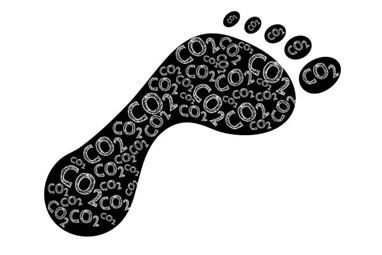
CARBON NEGATIVE? CARBON POSITIVIE? CLIMATE POSITIVE? WHAT AM I TRYING TO SAY?
A product or service’s carbon footprint is an important consideration in calculating its overall environmental impact. It takes into account any environmental trade-offs that may be involved in the process of provision. Ultimately, an entity’s carbon footprint is explained based on the net change of carbon dioxide in the atmosphere due to its production and use.
These terms, however, can be very confusing, for both consumers and industry professionals, as they are not as self-explanatory as they appear to be. Following is a list of all possible terms and definitions related to carbon footprint for clarity:
CARBON FOOTPRINT: The amount of carbon dioxide (CO2) emissions associated with all the activities of a person or other entity (e.g., building, corporation, country, etc.). It includes direct emissions, such as those that result from fossil-fuel combustion in manufacturing, heating, and transportation, as well as emissions required to produce the electricity associated with goods and services consumed. In addition, the carbon footprint concept also often includes the emissions of other greenhouse gases, such as methane, nitrous oxide, or chlorofluorocarbons (CFCs).
CARBON NEUTRAL: An activity that releases net zero carbon emissions into the atmosphere.
CARBON ZERO: The same as CARBON NEUTRAL.
CLIMATE POSITIVE: An activity that goes beyond achieving net zero carbon emissions and creates an environmental benefit by removing additional carbon dioxide from the atmosphere.
CARBON NEGATIVE: The same as CLIMATE POSITIVE. The confusion is usually caused as a good action in defined by the term negative.
CARBON POSITIVE: Contrary to popular instinct, CARBON POSITIVE means the same as CARBON NEGATIVE and CLIMATE POSITIVE. It is often confused to be the opposite of CARBON NEGATIVE and can be understood as positive emissions, which is not true. CARBON POSITIVE is less commonly used as compared to CLIMATE POSITIVE AND CARBON NEGATIVE. The term CARBON POSITIVE is most aptly used to define a process that produces more energy than it needs and feeds that energy back into the grid.
Watch out for our next blog on Life Cycle Analysis to learn more about the different measures used to determine the environmental impact of products.







